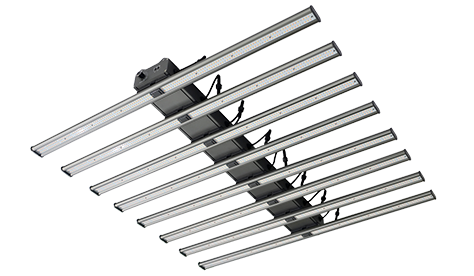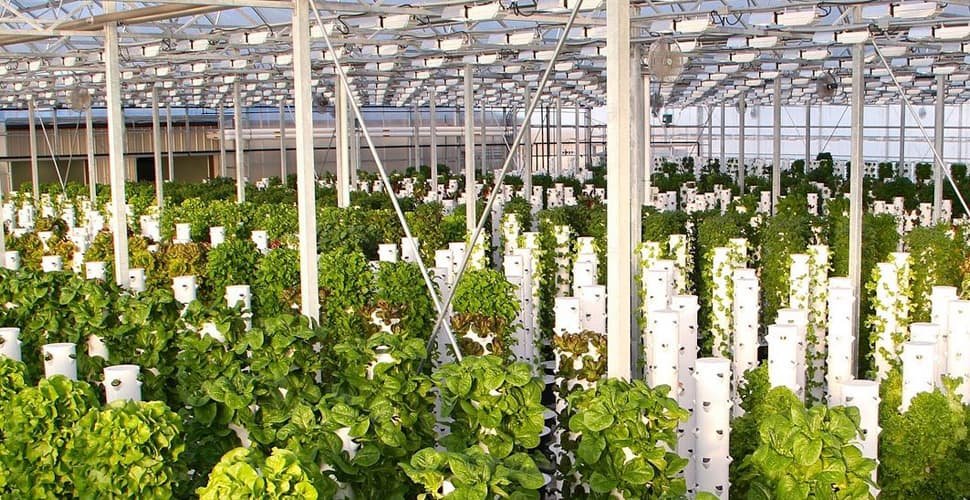Binnenplanten houden kan plezierig zijn omdat u controle hebt over hun omgeving. LED -kweeklampen kunnen de plantengroei verbeteren, het nog meer bevredigender maken.
Het is ons onder de aandacht gebracht dat sommige nieuwkomers vragen naar LED -lichten binnenshuis en hun gebruik. Is het waar dat planten sneller groeien met blootstelling aan constant licht? Kan ik mijn kweeklicht op 24 uur laten?
Eerlijk gezegd is het niet raadzaam om kweeklichten op 24 uur te laten.
Overmatig licht kan schadelijk zijn voor planten en kan leiden tot verhoogd elektriciteitsverbruik, zelfs met een lage wattage lamp. Het is echter niet altijd nodig om overmatig licht voor uw planten te hebben.
Hoewel continu licht de productie van broeikasgassen kan stimuleren, is het essentieel dat planten perioden van duisternis hebben om hun groei te reguleren, beschadigde weefsels te repareren en energie op te slaan.
Zonder voldoende donkere periodes zullen planten stress en schade ervaren, wat resulteert in achtergebleven groei, verwelken en zelfs de dood.
Heb je er ooit aan gedacht hoe lang om een kweeklicht aan te laten?

Hoe lang om te laten groeien lichten aan?
Meestal varieert de hoeveelheid tijd die LED -kweeklichten moeten worden ingeschakeld op basis van de specifieke behoeften van de groeiering.
Als algemene regel vereisen de meeste planten elke dag ongeveer 12-16 uur licht en 8-12 uur duisternis.
Het bereik van 12-16 uur kan verwarrend zijn.
Sommige planten hebben slechts 12 uur licht blootstelling nodig. Als uw LED -kweeklichten 15 uur aan zijn, kan de plant verwelken en sterven vanwege overmatige blootstelling aan het licht.
Maar sommige planten hebben misschien maar liefst 16 uur licht blootstelling nodig. Als uw kweeklampen slechts 12 uur werken, krijgt de plant mogelijk niet voldoende licht en kan de groei ervan worden gehinderd.
Lichte vereisten voor planten
Elke plant heeft een unieke vereiste voor de hoeveelheid licht die het nodig heeft.
Veel planten hebben ongeveer 12 uur licht per dag nodig om te groeien en te gedijen, en sommige nog meer. Dit komt omdat ze voldoende licht nodig hebben voor fotosynthese.
Wanneer uw indoor groeimeditie voldoende licht mist, is het essentieel om gebruik te maken van LED -kweeklampen.
- Rozen. Over het algemeen kan de rozenproductie worden verhoogd door continu licht te gebruiken. Schaduwtolerante variëteiten groeien goed in minder dan 6 uur zonlicht per dag.
- Tomaten. Tomatenplanten hebben veel licht nodig om gezond, smakelijk fruit te produceren. De tomaten groeien lichturen zijn 12-16 uur per dag.
- Komkommers. Komkommerplanten hebben ook dagelijks 12 uur licht nodig om gezond, smakelijk fruit te produceren.
- Pepers. Net als tomaten hebben pepers ongeveer 12-16 uur licht per dag nodig om te gedijen.
- Hennep. Tijdens het groeifase hebben cannabisplanten 18-24 uur licht per dag nodig van indoor groeit LED-lichten. Tijdens het bloeiende stadium hebben cannabisplanten 12 uur licht en 12 uur duisternis per dag nodig.
- Vetzuiging. Je clip-on kweeklichten voor binnenplanten kunnen 14-16 uur per dag werken tijdens het actieve groeiseizoen van je vetplanten, waardoor ze tijdens het slapende seizoen worden verkleind tot 8-10 uur per dag.
- Kruiden. Voor buitengroei hebben de meeste kruiden minimaal 6 uur direct zonlicht per dag nodig, terwijl Basil 8 of meer uren licht nodig heeft. Door binnen te groeien, kunnen LED-kweeklichten 12-16 uur per dag werken.
- Sla. Onder binnenshuis kweek lichte kits, zaailingen hebben ongeveer 14-16 uur licht per dag nodig. Naarmate planten volwassen worden, kunnen ze iets minder licht nodig hebben, ongeveer 12-14 uur per dag.
- Aardbei Voor buitengroei heeft u ongeveer 10-12 uur licht per dag nodig. Houd uw lichten voor het groeien van binnenshuis 14-16 uur aan het werk.
Groeicyclus van planten
De lichte vereisten voor planten variëren afhankelijk van hun groeifase.
Planten vereisen verschillende hoeveelheden en soorten licht in elke fase van groei, bloei en vruchten, net zoals mensen verschillende soorten voeding in verschillende levensfasen vereisen.
Nu kunnen we doorgaan met het leren over de vereiste hoeveelheid licht voor verschillende stadia van plantengroei.
Hennep

Vegetatieve fase
Je groeiende wiet binnenshuis moet 18-24 uur werken in de periode waarin de plant bladeren en stengels groeit.
Deze langere periode van licht stelt de plant in staat om de energie te fotosynthetiseren en te produceren die nodig is voor de groei en ontwikkeling van bladeren en stengels.
In termen van lichtintensiteit vereisen cannabisplanten 1000-1500 μmol/m²/s tijdens de groeifase. De specifieke vereiste lichtintensiteit kan afhangen van factoren zoals de genetica van de plant, de groeiende omgeving en de specifieke gebruikte groeimethode.
Het bieden van de juiste hoeveelheid en intensiteit van het licht in dit stadium is cruciaal om een gezonde plantengroei en ontwikkeling te garanderen. Daarom De juiste LED -kweeklichten kiezen Voor uw planten is een belangrijk punt voor het groeien van cannabis binnenshuis.
Onvoldoende licht kan de plant verzwakken en resulteren in lagere opbrengsten, terwijl overmatig licht de bladeren kan benadrukken en schaden, waardoor de groei negatief wordt beïnvloed.
Bloeifase
Wanneer cannabis knoppen begint te produceren, heeft de cannabisplant 12 uur licht en 12 uur duisternis per dag nodig. Dit kan komen om de productie van bloemen of knoppen te activeren om bloemknoppen te produceren.
In termen van lichtintensiteit vereisen cannabisplanten 600-800 μmol/m²/s tijdens de bloeifase. Dit lichtniveau is iets lager dan dat vereist is voor de groeifase, omdat de focus van de plant is verschoven van aseksuele reproductie naar bloeiende productie.
Tijdens het bloeiende stadium is het cruciaal om een consistente 12/12 lichtcyclus te behouden. Elke verstoring van de cyclus kan een negatieve invloed hebben op het vermogen van de plant om knoppen te bloeien of te produceren.
Aardbeien

Zelfs wanneer Growing aardbeien binnenshuis met commerciële kasverlichting, er zijn verschillende vereisten voor de lichtcyclus van aardbeien.
Kiemstadium
Vanaf het zaad hebben aardbeien laag tot gemiddeld licht nodig. Het is het beste om ze ongeveer 12-16 uur licht per dag te bieden.
Vegetatieve fase
Tijdens de fase van de groeifase vereisen aardbeien hogere lichtniveaus. Het wordt aanbevolen om ze 14-18 uur licht per dag te bieden.
Bloeifase
Aardbeien hebben meer licht nodig dan in het groeifase, idealiter 16-18 uur licht.
Fruit rijpingsfase
Aardbeien die het vruchtpodium binnenkomen, hebben gematigde tot hoge lichtniveaus nodig. Houd uw lichten 12-14 uur aan het werk.
Naarmate uw planten groeien, is het belangrijk om hun voortgang te controleren en aanpassingen aan de LED -kweeklichten aan te brengen. Dit omvat het aanpassen van het lichtniveau en de hoogte om te voldoen aan hun veranderende lichtvereisten bij elke groeifase.
Zowel wilde aardbeien als juni -aardbeien hebben verschillende lichtvereisten. Om ervoor te zorgen dat uw planten de juiste hoeveelheid licht krijgen, onderzoekt u hun specifieke behoeften.
Vetzuiging

Voor vetplanten is het het beste om ze 14-16 uur licht per dag te geven wanneer ze actief groeien, en het vervolgens te verminderen tot 8-10 uur per dag wanneer ze in hun slapende periode zijn.
Kiemstadium
Sapplannen hebben helder, direct licht nodig voor succesvolle kiemkracht. Binnen huis planten kweeklichten met een intensiteit van 200 tot 400 µmol/m²/s en een kleurtemperatuur van 5000K tot 6500K is ideaal voor deze fase.
Vegetatieve fase
In deze fase vereisen vetplanten meer intens licht dan in de kiem- en zaailingsfasen. Binnenkruidgroeiend licht met een intensiteit van 400 tot 600 µmol/m²/s en een kleurtemperatuur van 5000K tot 6500K is ideaal voor deze fase.
Bloeifase
In dit stadium hebben vetplanten het meest intense licht nodig. Binnengroeilampen voor planten met een intensiteit van 600 tot 800 µmol/m²/s en een kleurtemperatuur van 2700K tot 3000K zijn ideaal voor deze fase.
Sommige soorten vetplanten kunnen veel minder licht verdragen. Het is het beste om de specifieke behoeften van uw planten te onderzoeken om ervoor te zorgen dat ze de juiste hoeveelheid licht krijgen.
Om uw vetplanten gezond te houden, zorg er dan voor dat ze niet worden blootgesteld aan overmatig direct zonlicht. Als u aanwijzingen van zonneschade waarneemt, zoals bruine vlekken of bladverbranding, het kan nodig zijn om uw vetplanten te verplaatsen naar een enigszins schaduwrijke plek.
Kunnen planten te veel licht krijgen?
Heb je ooit het gezegde gehoord dat je, om grote dingen te bereiken, geen snelle resultaten kunt verwachten en als je je alleen op kleine voordelen concentreert, kun je je uiteindelijke doel niet bereiken?
Zoals we al zeiden, vragen sommige nieuwkomers of het mogelijk is om een kweeklicht te laten op 24 uur per dag, zodat de planten snel de ontwikkelings- en vruchtfase kunnen bereiken.
Hij wil alleen de volwassenheid van de plant snel bereiken en negeert het probleem dat Te veel licht benadrukt planten.

Foto-oxidatieve stress
LED -LED -kweeklampen 24/7 betekent dat intense blootstelling aan licht schade aan plantencellen kan veroorzaken door reactieve zuurstofspecies (ROS) te produceren. Dit kan leiden tot verminderde groei, stunting en zelfs celdood.
Degradatie van chlorofyl
Chlorofyl is het pigment dat verantwoordelijk is voor het vastleggen van lichte energie in fotosynthese. Overmatige blootstelling aan licht kan leiden tot de afbraak van chlorofyl in bladeren, wat kan leiden tot een verminderde fotosynthetische capaciteit en langzamere groei.
Verbrande bladeren
Bladeren van planten kunnen worden verbrand of verschroeid door lichten 24/7 achter te laten. Verminderde fotosynthetische capaciteit van planten.
Minder efficiënt gebruik van water
Planten die worden blootgesteld aan te veel licht kunnen ook meer water verliezen door transpiratie en planten lopen het risico op droogtestress.
Verminderde voedingsstof
Hoge lichtniveaus kunnen ook schade aan de wortels van planten veroorzaken, wat hun vermogen om voedingsstoffen uit de bodem te absorberen en de groei en ontwikkeling van de bodem te absorberen, kunnen verminderen.
Conclusie
Om de beste resultaten te bereiken bij het gebruik van LED -kweeklichten, is het belangrijk om factoren zoals het plantentype, de groeifase en de lichtintensiteit te overwegen.
Voor de vegetatieve fase hebben de meeste planten 14 tot 18 uur dagelijks licht nodig, terwijl de bloeifase 12 uur licht per dag vereist.
Om ervoor te zorgen dat planten de juiste hoeveelheid licht ontvangen voor hun unieke vereisten, is het cruciaal om ze regelmatig te controleren en hun verlichtingsschema's aan te passen indien nodig.
En u moet er rekening mee houden dat te veel licht schadelijk kan zijn voor planten, wat resulteert in stress en de groei belemmerde.
Voor consistent licht en voldoende rusttijd voor planten, is het raadzaam om een timer of LED -kweeklichtcontroller te gebruiken.
De LED-groeilichtcontroller Van AuxGrow is zeer compatibel en werkt samen met 90% van de LED -groei -lichtmerken die vandaag beschikbaar zijn.
Als u geïnteresseerd bent in het beheersen van uw plantverlichting’ Uituren met dit product, Neem contact met ons op voor meer informatie.
Jayes
Als Digital Marketing Manager bij AUXGROW combineert Jayes een passie voor hydrocultuursystemen en expertise in LED-groeilampen. Met praktijkervaring en diepgaand inzicht begeleidt Jayes u door de wereld van duurzame teelt.





